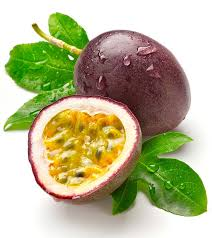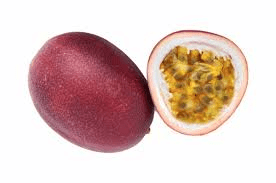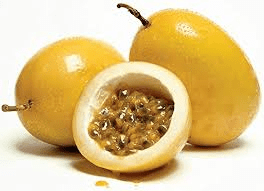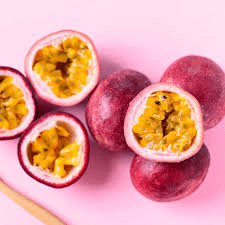Passion fruits are prized for their vibrant flavor and health benefits, making them a popular export commodity. Successfully exporting passion fruits requires careful attention to processing, packaging, and market dynamics. Here’s a comprehensive guide on how to handle these aspects effectively.
Start by harvesting the fruits when they are ripe, indicated by their purple or yellow color and slightly wrinkled appearance. After picking, sort the fruits based on size, color, and ripeness, discarding any damaged or rotten ones. Wash the fruits thoroughly to remove dirt and pesticides, using clean water and mild detergent if needed.
Dry the washed fruits using air or a clean cloth to prevent mold growth. Next, grade the fruits according to the quality standards required by the export market. Use suitable containers like wooden crates or cardboard boxes with proper ventilation for packaging, and label each package with necessary details such as origin, variety, grade, and weight. Store the packaged fruits in a cool, dry place to maintain freshness before shipping.
Finally, prepare the required export documentation, including phytosanitary certificates, certificates of origin, and export licenses, and arrange for careful transportation to the port or airport.
Select appropriate packaging materials like wooden crates, cardboard boxes, or plastic crates that provide good ventilation. Use cushioning materials like foam nets or paper to protect the fruits from bruising during transit. Arrange the passion fruits in layers, ensuring each fruit is well-supported and not pressing against others.
Secure the package with strong tape or strapping to keep the fruits from moving during transportation. Clearly label each package with information such as the type of fruit, quantity, grade, origin, and destination. Insert necessary documents like the invoice, packing list, and any required certificates inside the package or attach them securely to the outside.
Ensure all packages are sealed properly to prevent contamination and damage. Inspect each package before shipping to ensure it meets export standards and is free from damage. If shipping in bulk, stack the packages on pallets for easier handling and transportation. Arrange for temperature-controlled shipping if required to maintain fruit freshness during transit.
Conduct thorough market research to identify the demand and potential buyers for passion fruits in different countries. Ensure you meet the export regulations and standards of the destination country, including obtaining necessary certifications.
Calculate all costs involved in the export process, including harvesting, packaging, transportation, and tariffs, to determine pricing. Network with potential buyers through trade shows, online platforms, and export associations to establish business relationships.
Negotiate contracts with buyers, ensuring clear terms on pricing, payment methods, delivery schedules, and quality standards. Maintain strict quality control throughout the harvesting, processing, and packaging stages to meet buyer expectations. Plan the logistics for transporting the fruits, choosing reliable shipping companies, and ensuring timely delivery.
Agree on favorable payment terms with buyers, such as Letters of Credit, to secure payments. Invest in marketing strategies to promote your passion fruits, highlighting their quality, taste, and health benefits. Foster good relationships with buyers and suppliers for long-term business growth and repeat orders.
How to Process Passion Fruits for Exportation

1. Harvesting: Pick passion fruits when they are ripe. They should be purple or yellow, depending on the variety, and slightly wrinkled.
2. Sorting: Sort the fruits based on size, color, and ripeness. Discard any damaged or rotten fruits.
3. Washing: Wash the fruits thoroughly to remove any dirt or pesticides. Use clean water and a mild detergent if necessary.
4. Drying: Air dry the washed fruits or use a clean cloth to pat them dry. Ensure there is no excess moisture to prevent mold growth.
5. Grading: Grade the fruits according to quality standards required by the export market.
6. Packaging: Use suitable containers that protect the fruits during transportation. Typically, wooden crates or cardboard boxes with proper ventilation are used.
7. Labeling: Label each package with necessary details like the origin, variety, grade, and weight of the fruits.
8. Storage: Store the packaged fruits in a cool, dry place to maintain their freshness before shipping.
9. Documentation: Prepare the required export documentation, including phytosanitary certificates, certificates of origin, and export licenses.
10. Transporting: Arrange for transportation to the port or airport, ensuring the fruits are handled carefully to avoid damage.
Read Also: Milk Processing and Storage Methods
How to Package Passion Fruits for Exportation

1. Selecting Packaging Material: Choose appropriate packaging materials like wooden crates, cardboard boxes, or plastic crates that provide good ventilation.
2. Cushioning: Use cushioning materials like foam nets or paper to protect the fruits from bruising during transit.
3. Layering: Arrange the passion fruits in layers, ensuring each fruit is well-supported and not pressing against others.
4. Securing the Package: Secure the package with strong tape or strapping to keep the fruits from moving during transportation.
5. Labeling: Clearly label each package with information such as the type of fruit, quantity, grade, origin, and destination.
6. Including Documentation: Insert necessary documents like the invoice, packing list, and any required certificates inside the package or attach them securely to the outside.
7. Sealing: Ensure all packages are sealed properly to prevent contamination and damage.
8. Inspecting: Before shipping, inspect each package to ensure it meets export standards and is free from damage.
9. Palletizing: If shipping in bulk, stack the packages on pallets for easier handling and transportation.
10. Temperature Control: If required, arrange for temperature-controlled shipping to maintain fruit freshness during transit.
How to Export Passion Fruits for Profits
1. Market Research: Conduct thorough market research to identify the demand and potential buyers for passion fruits in different countries.
2. Compliance: Ensure you meet the export regulations and standards of the destination country, including obtaining necessary certifications.
3. Cost Analysis: Calculate all costs involved in the export process, including harvesting, packaging, transportation, and tariffs, to determine pricing.
4. Finding Buyers: Network with potential buyers through trade shows, online platforms, and export associations to establish business relationships.
5. Negotiating Contracts: Negotiate contracts with buyers, ensuring clear terms on pricing, payment methods, delivery schedules, and quality standards.
6. Quality Control: Maintain strict quality control throughout the harvesting, processing, and packaging stages to meet buyer expectations.
7. Logistics Planning: Plan the logistics for transporting the fruits, choosing reliable shipping companies, and ensuring timely delivery.
8. Payment Terms: Agree on favorable payment terms with buyers, such as Letters of Credit, to secure payments.
9. Marketing: Invest in marketing strategies to promote your passion fruits, highlighting their quality, taste, and health benefits.
10. Building Relationships: Foster good relationships with buyers and suppliers for long-term business growth and repeat orders.
Read Also: The History and Origin of Highland Cows
Frequently Asked Questions (FAQ’s) About Passion Fruits

1. What is the best time to harvest passion fruits?
Passion fruits are best harvested when they are fully ripe, which is usually when they have turned purple or yellow and are slightly wrinkled.
2. How should passion fruits be stored before export?
Passion fruits should be stored in a cool, dry place to maintain their freshness and prevent spoilage.
3. What are the common pests and diseases affecting passion fruits?
Common pests include fruit flies and aphids, while diseases like fusarium wilt and brown spot can affect the fruits.
4. How do you ensure the quality of passion fruits for export?
Ensure quality by sorting, grading, and packaging the fruits properly, and conducting regular quality checks throughout the process.
5. What packaging materials are best for exporting passion fruits?
Wooden crates, cardboard boxes, and plastic crates with good ventilation are ideal for packaging passion fruits.
6. What documents are required for exporting passion fruits?
Common documents include phytosanitary certificates, certificates of origin, export licenses, and commercial invoices.
7. How long do passion fruits last during transit?
With proper packaging and temperature control, passion fruits can last up to two weeks during transit.
8. What are the main export markets for passion fruits?
The main export markets include the United States, European Union, and Asia.
9. How can I find buyers for my passion fruits?
You can find buyers through trade shows, online marketplaces, export associations, and networking with industry professionals.
10. What are the key factors affecting the export price of passion fruits?
Key factors include quality, size, demand, market conditions, and transportation costs.
Read Also: Top 20 Proven Benefits of Ginger Plant

